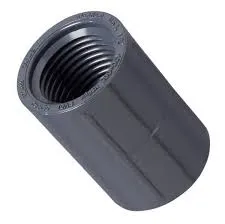-
Cangzhou Yulong Steel Co., Ltd.
-
Phone:
+86 13303177267 -
Email:
admin@ylsteelfittings.com
- English
- Arabic
- Italian
- Spanish
- Portuguese
- German
- kazakh
- Persian
- Greek
- French
- Russian
- Polish
- Thai
- Indonesian
- Vietnamese
- Zulu
- Korean
- Uzbek
- Hindi
- Serbian
- Malay
- Ukrainian
- Gujarati
- Haitian Creole
- hausa
- hawaiian
- Hebrew
- Miao
- Hungarian
- Icelandic
- igbo
- irish
- Japanese
- Javanese
- Kannada
- Khmer
- Rwandese
- Afrikaans
- Albanian
- Amharic
- Armenian
- Azerbaijani
- Basque
- Belarusian
- Bengali
- Bosnian
- Bulgarian
- Catalan
- Cebuano
- China
- China (Taiwan)
- Corsican
- Croatian
- Czech
- Danish
- Esperanto
- Estonian
- Finnish
- Frisian
- Galician
- Georgian
- Kurdish
- Kyrgyz
- Lao
- Latin
- Latvian
- Lithuanian
- Luxembourgish
- Macedonian
- Malgashi
- Malayalam
- Maltese
- Maori
- Marathi
- Mongolian
- Myanmar
- Nepali
- Norwegian
- Norwegian
- Occitan
- Pashto
- Dutch
- Punjabi
- Romanian
- Samoan
- Scottish Gaelic
- Sesotho
- Shona
- Sindhi
- Sinhala
- Slovak
- Slovenian
- Somali
- Sundanese
- Swahili
- Swedish
- Tagalog
- Tajik
- Tamil
- Tatar
- Telugu
- Turkish
- Turkmen
- Urdu
- Uighur
- Welsh
- Bantu
- Yiddish
- Yoruba

Dec . 03, 2024 16:19 Back to list
steel pipe bends and elbows
Steel Pipe Bends and Elbows Essential Components in Piping Systems
In the realm of industrial piping, steel pipe bends and elbows play a pivotal role in ensuring the efficient flow of liquids and gases. These components are crucial in achieving the desired direction in piping layouts, accommodating both structural flexibility and functional necessities. This article explores the importance, types, manufacturing processes, and applications of steel pipe bends and elbows.
Importance of Steel Pipe Bends and Elbows
Steel pipe bends and elbows are indispensable in piping systems for several reasons. Firstly, they allow for directional changes in the piping layout—turning corners and navigating obstacles without compromising the integrity and efficiency of flow. Secondly, they help in reducing the need for multiple fittings, thus simplifying the installation process. More importantly, these components mitigate flow resistance, which can lead to pressure drops, ensuring that the system operates effectively.
Types of Steel Pipe Bends and Elbows
Steel pipe bends and elbows come in various types, tailored to meet specific application requirements. The two primary categories are
1. Elbows These components are used to change the direction of the pipeline. Common angles for elbows include 90 degrees, 45 degrees, and sometimes 22.5 degrees. Elbows are designed to fit seamlessly with pipelines and can be classified into - Long Radius Elbows (LR) Typically having a radius that is 1.5 times the nominal diameter, these elbows are preferable for applications where fluid flow needs to be optimized. - Short Radius Elbows (SR) With a radius equal to the nominal diameter, these are often used in tighter spaces but can lead to higher pressure drops due to turbulence during fluid flow.
2. Bends Unlike elbows, bends have a more gradual angle of arc, which minimizes flow disturbance. Bends can be made in custom angles and are utilized in scenarios where a smoother change in direction is necessary.
Manufacturing Processes
The manufacturing of steel pipe bends and elbows involves several advanced techniques to ensure durability and accuracy. The primary methods include
- Hot Bending This traditional technique involves heating the steel pipe to a specific temperature before bending. This process enhances the material’s ductility and prevents cracking, which can occur during cold bending.
steel pipe bends and elbows

- Cold Bending In cases where heat is not applied, steel pipes are bent at room temperature
. This method is generally quicker and less costly but can lead to certain dimensional inaccuracies due to the inherent rigidity of the metal.- Mechanical Bending Utilizing machinery, this method allows for precise control over the bend angle and radius, ensuring that the product meets specific engineering requirements.
- Fabrication Custom-designed bends and elbows can be fabricated by cutting shaped pieces from larger steel plates and welding them together. This method is often employed when non-standard angles or sizes are needed.
Applications of Steel Pipe Bends and Elbows
Steel pipe bends and elbows are utilized across various industries, reflecting their versatility and reliability. Some notable applications include
- Oil and Gas Essential in pipelines that transport crude oil, natural gas, and refined products, these components ensure smooth transitions in complex pipeline networks.
- Water and Wastewater Management In municipal piping systems, bends and elbows facilitate the efficient transit of water and wastewater, adapting to terrain and urban infrastructures.
- Manufacturing In various manufacturing processes, piping systems often require bends and elbows to connect machinery and processing units, thus playing a key role in productivity.
- HVAC Systems Elbows and bends are integral in heating, ventilation, and air conditioning systems, directing airflow efficiently throughout buildings and industrial spaces.
Conclusion
Steel pipe bends and elbows are fundamental components in piping systems across a range of industries. Their ability to facilitate directional changes, minimize pressure loss, and accommodate complex layouts makes them invaluable. As industries continue to evolve, the manufacturing processes and innovations surrounding bends and elbows will undoubtedly advance, improving their efficiency and performance in various applications. Understanding their importance and applications can help industry professionals make informed decisions that enhance the overall functionality and longevity of their piping systems.
Latest news
-
ANSI 150P SS304 SO FLANGE
NewsFeb.14,2025
-
ASTM A333GR6 STEEL PIPE
NewsJan.20,2025
-
ANSI B16.5 WELDING NECK FLANGE
NewsJan.15,2026
-
ANSI B16.5 SLIP-ON FLANGE
NewsApr.19,2024
-
SABS 1123 FLANGE
NewsJan.15,2025
-
DIN86044 PLATE FLANGE
NewsApr.19,2024
-
DIN2527 BLIND FLANGE
NewsApr.12,2024
-
JIS B2311 Butt-Welding Fittings LR/SR 45°/90° /180°Seamless/Weld
NewsApr.23,2024











